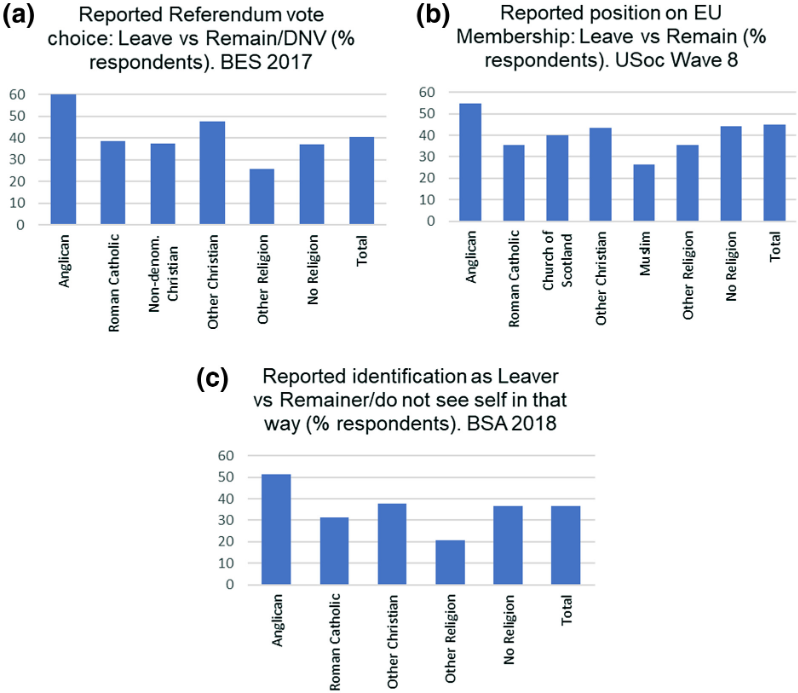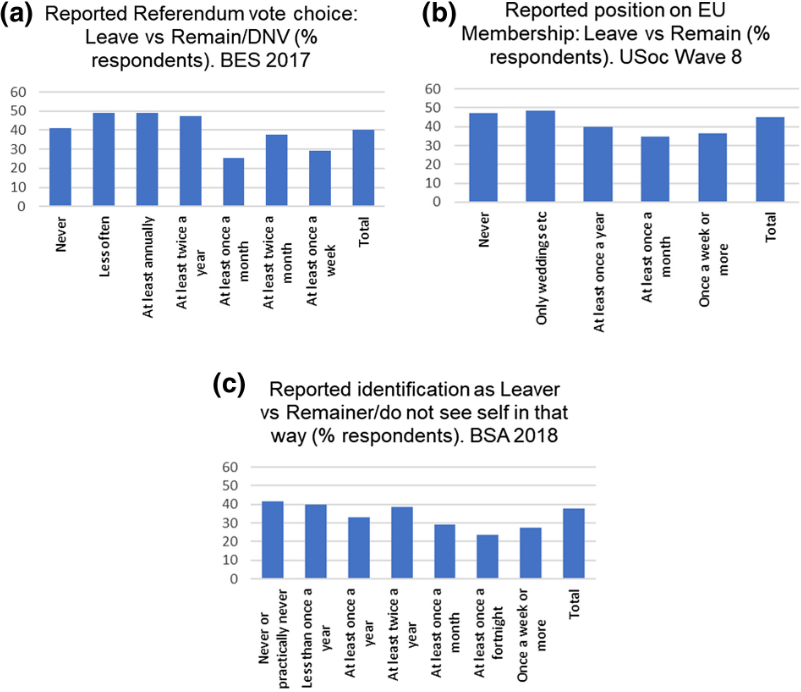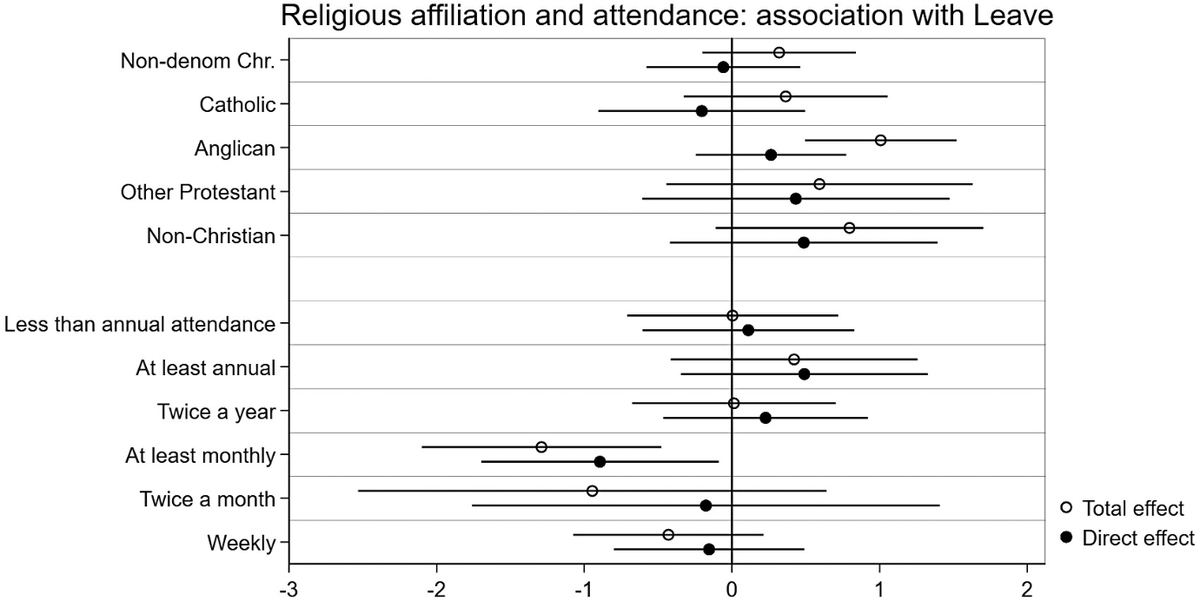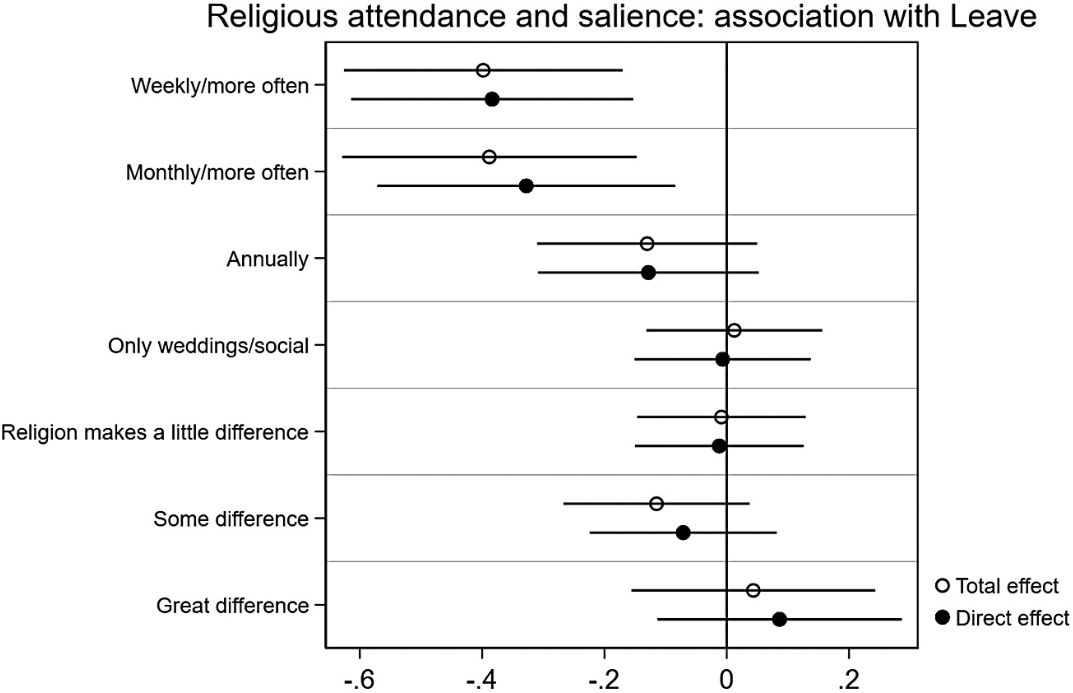Good to see my new article out so quickly after final edits - on religious affiliation, attendance and belief and their associations with support for Brexit: https://onlinelibrary.wiley.com/doi/abs/10.1111/1468-4446.12793">https://onlinelibrary.wiley.com/doi/abs/1... Thread: /1
It was originally motivated by the question of how religion and cultural systems more broadly were associated with the EU Referendum result. Religious data is very useful as cultural data - everyone has a position on it - so it was a useful route in /2
I use the @BESResearch 2017 f2f sample, Wave 8 of @usociety and BSA 2018 Religion IV module fielded as part of the ISSP by @NatCen to investigate religion and support for Brexit (BSA2008 and 2013 also turn up in the appendices) /3
Breakdowns by affiliation and attendance suggested that Anglicans were more pro-Brexit; and frequency of attendance appeared to be roughly positively associated with support for Remain, though weekly attenders were perhaps slightly less so /4
Then used nested models using the KHB method @kbkarlson to assess how religious affiliation, attendance and belief were mediated by values and political attitudes. I drew on important papers by Chris Raymond @HAPPatQUB@ in 2011 and Ben Clements @uniofleicester /5
Both looked further back in the funnel of causality to assess religion as mediated by more proximate political variables: both under-cited, prescient works. Conventional models tend to include many proximate variables, which mask the largely indirect effect of religion /6
Anglicanism was fairly consistently associated with being more pro-Leave than those identifying as having no religious affiliation, even controlling for age and so on. More frequent attendance was associated with being more pro-Remain. Graphs here from BES & USoc: /7
The puzzle was why attendance is associated with Remain. Is it because they’re more religious generally, so more motivated to go to church than those affiliated who don’t go? Do they hold to a version of & #39;Golden Rule Christianity& #39;? Or is it about who they meet? /8
It appeared the ‘Anglican’ effect works mostly through authoritarian values while the ‘attendance effect’ works partly through civic engagement more generally. Attenders tend to attend many things, and ‘being involved generally ’ was also associated with supporting Remain /9
Looking at religiosity in particular I drew on 18 other measures of religiosity using ISSP& #39;s Religion IV, including belief, prayer, reading holy text, self-reported religosity. These can be separated out as intensity of orthodox belief, heterodox belief, and practice /10

 Read on Twitter
Read on Twitter






